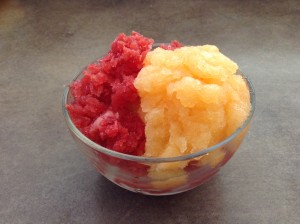Overnight Oats
/Do you find that weekday mornings are rushed?
If so, you're not alone. Most families I work with name this (and weeknight evenings) as the most harried times of the week.
Usually I share recipe ideas that can help with weeknights.
But I've recently given overnight oatmeal a try and I'm loving this! I've totally jumped on the bandwagon. And I'm sharing the recipe with you so you can jump aboard too.
Prepared the night before, and with no cooking required, overnight oats are fantastic!
Made with rolled oats, it's a minimally processed, whole food way to start the day. Much healthier than most boxed cereals and those instant oatmeal packets.
And, it travels well. Which is perfect if you find that you can get your kids fed in the morning but you struggle to get something into yourself. I know that many people rely on smoothies in this situation. But I've always found that I'm hungry again by about 10am when I've had a smoothie for breakfast. Not so with overnight oats - I'm full until noon (or later)!
This recipe is really more of a technique. Mix and match proteins and fruits for variety and to find your favourite combination.
Overnight Oatmeal Directions:
Oats:
Combine equal parts rolled oats with yogurt and milk in a bowl or the container that you'll take this in to go (I carried mine with me in the mason jar). A generous adult serving is 1/3c up oats, 1/3 cup yogurt, 1/3 cup milk (or skip the yogurt and use 1/2 cup or more of a plant-based milk alternative, such as oat milk). For kids, start with 1/4 cup of each ingredient and adjust from there depending on your child's appetite.
Protein:
Choose a protein that you like. Examples include hemp hearts (my personal favourite), chia seeds, chopped or sliced nuts, nut butter, pumpkin seeds. Add it to the oat mixture.
Fruit:
Choose a fruit that you like. Examples include: applesauce (my personal favourite), berries, pomegranate, pumpkin puree. Add it to the oat mixture.
As the name of this dish suggests, prepare everything the night before. Place it in the fridge. The next morning, give it a stir and enjoy!
Get more healthy recipes here.

























